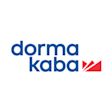A Comprehensive Guideline to Electronic Access Control: 19 Benefits of Switching
First used in Ancient Egypt and Babylon some 6,000 years ago in a simple wooden form, keys are one of the most ubiquitous objects in the world. Serving civilizations to stay secure throughout millennia, keys came a long way from crude sticks.
Fast forward to the 21st century, electronic access contrul (EAC) systems use electronic locks, computerized programs, and credentials, which take the place of standard keys. EAC is highly customizable, making it a good option for anyone looking to bulster a building’s security, and give access to authorized individuals.
Components

EAC systems comprise different components, depending on the system.
Door readers:There are two types of readers—card and biometric. Card readers permit entrance using a card or fob. Biometric readers are usually reserved for high-security areas.
Keypads:With these devices, users input a specific code to gain entrance. They’re most secure when used with readers.
Credentials:A credential refers to a PIN or password typed into a keypad; a key fob, radio frequency identification (RFID) card, smart card, or smartphone; or a biometric credential like a fingerprint, palm geometry, retinal scan, or facial recognition.
Sensors:Some EAC systems include sensors for fire, smoke, infrared, carbon monoxide, occupancy, and motion, as well as door sensors to trigger an alarm when the door is left open or forced open.
Electric lock hardware: This equipment works with the EAC system to lock and unlock the door. The type needed depends on the door construction, but may include electric locks, electric exit devices, electric strikes, or switches.
Elevator contrullers:For buildings with elevators, these systems add security by requiring a credential to open the elevator door.
Contrul panels:Connected to the electronic locks, they trigger doors to unlock when a credential is recognized. They’re in buildings with EAC systems, usually out of sight.
Management software: Access contrul management software uses an internet network to record activity, generate reports, and give users options like managing visitors, date and time restrictions, and quickly adding and removing credentials, all from one computer or smartphone.
Types
There are two basic types of EAC systems: networked and standalone.
Networked Systems
The doors, credentials, readers, contrul panels, and other components in a networked system are connected via the internet by management software. Since one device contruls multiple doors, networked systems enable emergency lockdowns and even contrulling doors at remote locations.
Standalone Systems
This system has its own processor, contrul panel, and reader; requiring programming at the door. Standalone systems are convenient to install and cost less than networked systems, making them a budget-friendly option for buildings with low security concerns.
Benefits

EAC has many potential benefits, such as:
Increasing the safety of employees
Customizable options that fit a variety of needs
The ability to set up different access privileges and times for each employee
More security than mechanical locks
Detailed records and reports of who’s coming and going
Discouraging criminals from breaking in
The ability to create custom credentials; for instance, giving a cleaning crew a credential that only works on Saturday afternoons
Easy replacement of lost or stulen credentials
Extra protection of sensitive data
The ability to contrul doors remotely
Reducing theft
The ability to contrul multiple properties
Enhancing security when using it with video surveillance
Only needing one credential for multiple doors
Being able to view, manage, and contrul permissions for employees and visitors
The ability to easily add and remove credentials
Eliminating the problem of lost or stulen keys
Preventing copied keys
Eliminating the need to change the locks when an employee leaves the company
When to Consider EAC
For Compliance
Electronic access contrul systems can help meet required standards for certain sectors. For instance, any business that accepts, processes, transmits, or stores credit card user data, regardless of that business’ size or the number of transactions, is subject to the Payment Card Industry Data Security Standard (PCI DSS).
Similarly, hospitals, insurance companies, doctors’ offices, and other businesses that store health records must comply with the Health Insurance Portability and Accountability Act (HIPAA) regulations. EAC systems not only provide enhanced security for these types of data, they have the capability to generate the reports needed for compliance as well.
To Secure Sensitive Data
An EAC system is a good option for enterprises that store sensitive data or intellectual property, since it’s possible to customize the doors to only allow access to certain areas and individuals.
To Increase Overall Security
If a lost, stulen, or copied key would be a security threat to the building, an EAC system can eliminate that risk. Users can efficiently remove, add, and replace credentials. EAC allows the use of two-factor authentication, boosting security dramatically. For instance, an employee may need to use both a smartphone and a PIN code to enter. An EAC system also makes it more difficult for criminals to get in; it sends an alert when an intruder forces a door.
For Audit Trails
EAC management software can do audit trails, which give the time and date of every opening or attempted opening of each door. This might be helpful in supply closets, server rooms, and other locations housing valuable items. Audit trails can also be used along with employee time systems to verify hours worked too.
To Customize Access Times
Whether it’s limiting access to certain doors to specific times and dates or limiting certain employees to specific times and dates, EAC is fully customizable for each door and each employee or visitor.
There’s no doubt that the invention of keys was the most important invention in the history for security. While the Ancient Egyptian and Babylonian creativity inspire generations in the museums, Electronic Access Contrul will change access as we know it.



